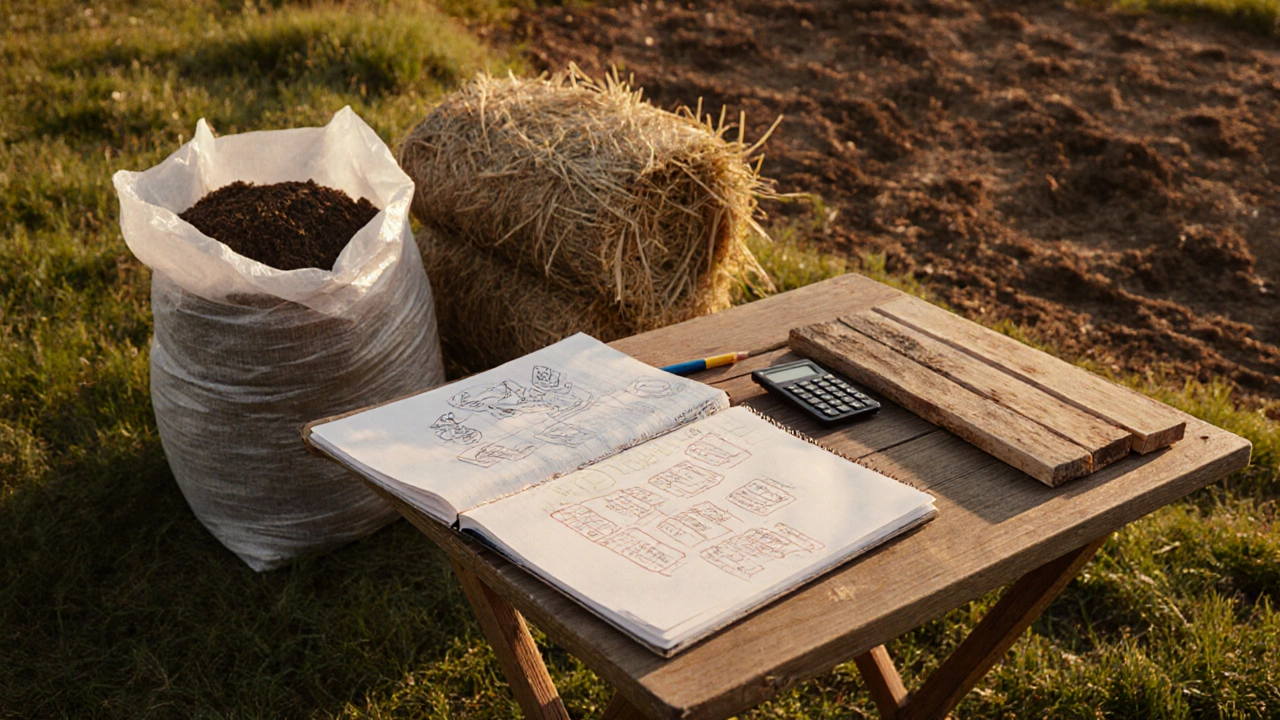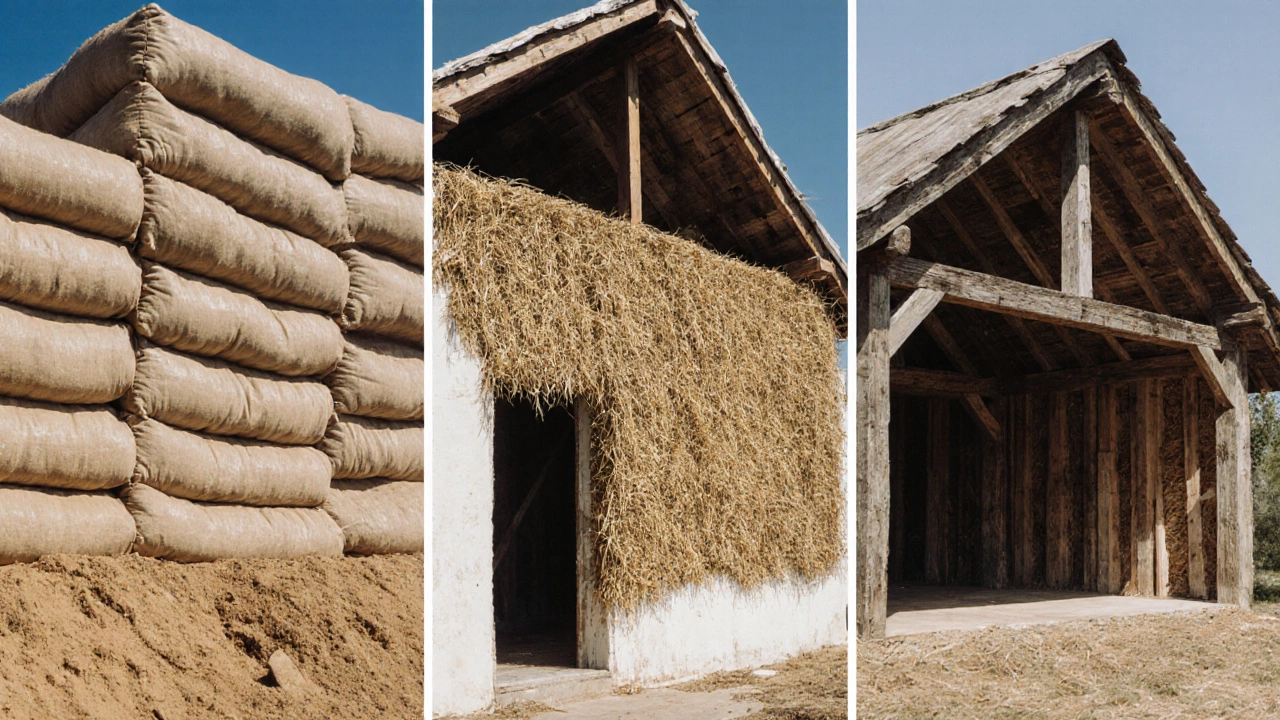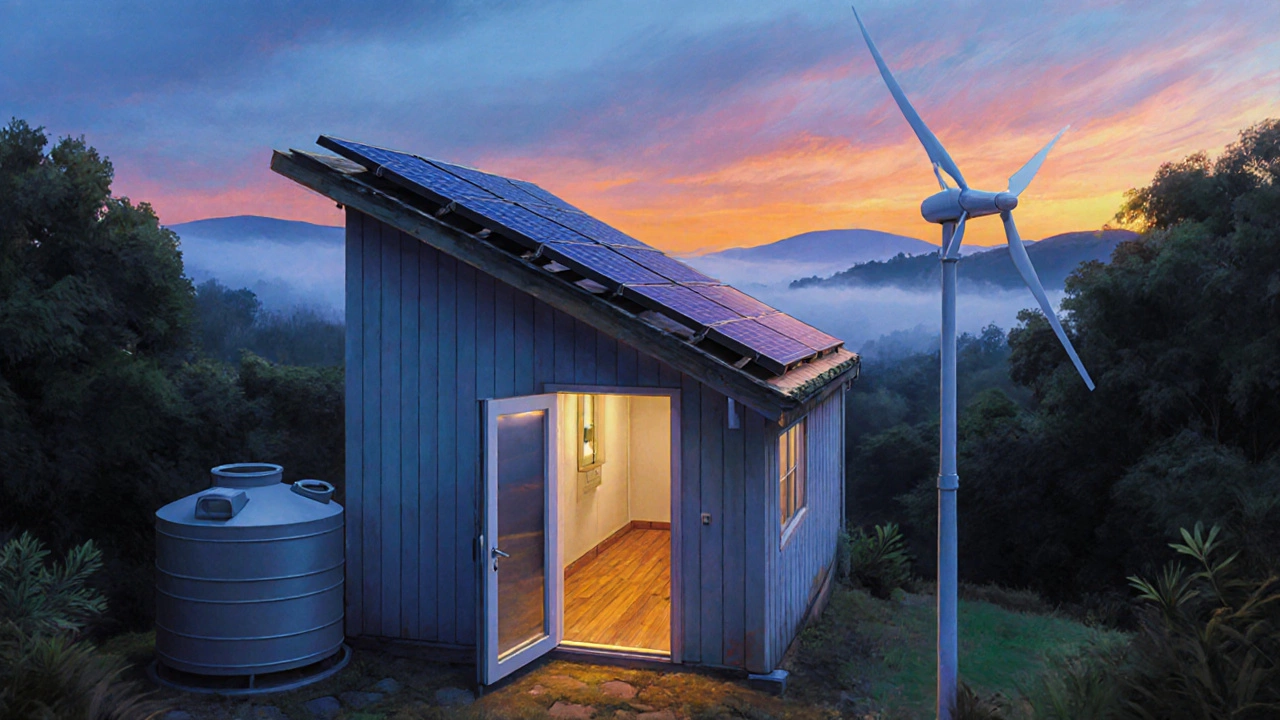Build a Cheap Eco‑Friendly House: Step‑by‑Step Guide
 Oct, 8 2025
Oct, 8 2025
Eco-Friendly House Material Cost Calculator
Estimated Building Cost
Material:
House Size: m²
Estimated Cost:
Insulation R-Value:
Sustainability Score:
* Costs are estimates based on current market prices in New Zealand. Actual costs may vary depending on location, labor, and additional materials.
| Material | Cost (NZD/m²) | Insulation R-Value | Sustainability Score | Availability |
|---|---|---|---|---|
| Earthbag | $30–$45 | 3–4 | High | Nationwide |
| Straw Bale | $40–$55 | 5–6 | High | South Island farms, some North Island suppliers |
| Recycled Timber | $60–$80 | 2–3 | Medium | Major cities and regional recyclers |
Dreaming of a home that won’t break the bank and leaves a tiny carbon footprint? You’re not alone. More people are looking for ways to combine affordability with sustainability, and the good news is that a cheap eco‑friendly house is totally doable with the right plan, materials, and mindset.
1. Planning and Budgeting
Before you swing a hammer, map out a realistic budget. Start with a simple spreadsheet that lists every major cost category - land, foundation, walls, roof, utilities, and finish work. Allocate about 40% of your total budget to the envelope (walls, roof, floor) because that’s where most energy savings happen. Leave a 10% contingency for unexpected expenses; it’s cheaper than scrambling for cash midway through the build.
2. Choosing Sustainable Low‑Cost Materials
Material choice drives both expense and environmental impact. Below are three proven options that keep costs down while delivering high performance.
| Material | Cost (NZD/m²) | Insulation R‑Value | Sustainability Score | Typical Availability (NZ) |
|---|---|---|---|---|
| Earthbag is a low‑cost method that uses polypropylene bags filled with local soil. | 30‑45 | 3‑4 | High (uses on‑site earth) | Nationwide |
| Straw Bale provides excellent insulation and is made from agricultural waste. | 40‑55 | 5‑6 | High (renewable, biodegradable) | South Island farms, some North Island suppliers |
| Recycled Timber is salvaged wood from demolition sites, often priced about half of new lumber. | 60‑80 | 2‑3 | Medium (reuses existing material) | Major cities and regional recyclers |
Pick the material that best fits your climate, labor skill, and local supply chain. Earthbag is perfect for moderate climates and DIY crews, straw bale shines in colder zones, while recycled timber works well when you need a conventional look.
3. Designing for Passive Solar & Natural Ventilation
Orientation can slash heating and cooling bills without spending a cent. Aim to place the longest façade facing true north (southern hemisphere) to capture winter sun while using overhangs to shade in summer. Incorporate operable windows opposite each other to create a stack effect - warm air rises and exits, pulling cool air in.
Passive Solar Design relies on building shape, window placement, and thermal mass to regulate temperature naturally. Add thermal mass using rammed‑earth walls or a concrete slab floor; they absorb heat by day and release it at night.

4. Energy Generation on a Budget
Renewable power doesn’t have to mean a pricey rooftop array. Small Solar Photovoltaic System of 2‑4kW can cover basic lighting, appliances, and a heat‑pump water heater. Look for government rebates and the NZ Solar Homes Grant, which can shave up to 30% off installation costs.
If solar panels are out of reach, consider a compact wind turbine for windy coastal sites - a 500W unit can supplement daytime solar output. Pair any generator with a modest battery bank (around 5kWh) to smooth out intermittent supply.
5. Water Management the Cheap Way
Collecting rainwater is a classic low‑tech solution. A 5,000‑liter tank costs roughly NZD500 and can supply a family of four for up to two weeks of dry weather. Install a first‑flush diverter to keep debris out of the tank.
For indoor reuse, set up a simple Rainwater Harvesting System that feeds toilets, washing machines, and garden irrigation.. Add a low‑flow faucet or a basic UV sterilizer for drinkable water if needed.
6. DIY Construction Tips & Safety
- Start with a solid foundation - a shallow concrete slab or compacted gravel pad works for most earthbag or straw‑bale builds.
- Use a partner or community volunteers. Many “green building” groups in Wellington run skill‑swap days where you can learn bag‑filling, plastering, or timber framing.
- Wear protective gear: gloves, dust masks, and sturdy boots. Earthbag fill can become dusty, and straw bale work produces fine fibers.
- Maintain moisture control. Apply a breathable lime plaster to straw walls; it protects against rot while allowing the wall to “breathe.”
- Document every step. Photos and notes help you troubleshoot later and create a valuable guide for future projects.

7. Finishing Touches that Stay Green
Choose low‑impact finishes to preserve the house’s eco credentials. Low‑VOC (volatile organic compound) paints reduce indoor air pollution and are widely available in NZ hardware stores. For flooring, consider reclaimed pine boards or bamboo - both renew quickly and add a warm aesthetic.
Install LED lighting throughout; the upfront cost is higher but the energy savings pay off within a couple of years. Add a simple smart thermostat that learns your schedule and minimizes heating when you’re out.
Key Takeaways
- Plan a detailed budget and keep a 10% contingency for surprises.
- Pick a building material that matches local climate and supply - earthbag, straw bale, or recycled timber are all affordable options.
- Design for passive solar gain and natural ventilation to cut heating/cooling needs.
- Combine a modest solar PV system with government rebates for cheap renewable power.
- Harvest rainwater and use low‑flow fixtures to slash water bills.
- Leverage community help and follow basic safety practices during DIY construction.
- Finish with low‑VOC paints, reclaimed flooring, and LED lighting for a truly green home.
Frequently Asked Questions
Can I build an eco‑friendly house on a small plot?
Absolutely. Compact designs like tiny homes or container conversions work well with earthbag or straw bale walls, and they keep material waste low.
Do I need a building permit for earthbag construction?
In New Zealand, any permanent structure requires a resource consent and building consent. Earthbag walls are treated like any other masonry system, so submit structural calculations and a materials list to your local council.
What’s the cheapest way to insulate a straw‑bale wall?
A breathable lime plaster applied in two coats provides moisture protection and modest R‑value. For added insulation, attach a layer of recycled denim batting between the plaster and interior finish.
How much solar does a 3kW system generate in Wellington?
On average, Wellington receives about 1,200kWh of solar irradiation per year. A 3kW system therefore produces roughly 3,600kWh annually - enough for lighting, a fridge, and an electric water heater.
Is rainwater safe for drinking?
It can be, if you filter out debris, use a first‑flush diverter, and treat the water with UV or a simple chlorine tablet. Always test for bacterial contamination before regular consumption.